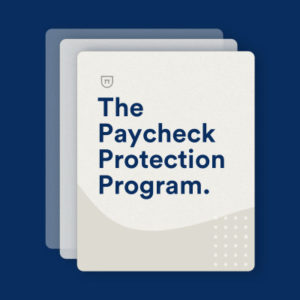How to Hold Public Meetings During COVID-19
As the U.S. continues to shelter in place, municipalities are forced to consider how they are able to continue their basic responsibilities and duties while keeping their staff and public safe. As time continues, more communities are asking questions on how they are able to continue their ongoing business at what may be Council meetings, Land Use Board or other committee meetings while adhering to NYS regulations. CDRPC has gathered relevant resources and guidance with goal to assist municipalities with practical considerations related to public meetings during the COVID-19 pandemic.
Open Meetings Law Changes Made
Emergency Changes to Open Meetings Law in Response to COVID-19 was issued by Governor Cuomo in Executive Order 202.1 on March 7, 2020. This relaxed the Open Meetings Law to allow meetings to be held remotely by conference call or via online teleconferencing software:
“Suspension of law allowing the attendance of meetings telephonically or other similar service:
Article 7 of the Public Officers Law, to the extent necessary to permit any public body to meet and take such actions authorized by the law without permitting in public in-person access to meetings and authorizing such meetings to be held remotely by conference call or similar service, provided that the public has the ability to view or listen to such proceeding and that such meetings are recorded and later transcribed;”
The Executive Order was recently extended through August 5th, 2020. This extension does not currently cover Public Hearings.
Conducting Meetings and Public Hearings During the COVID-19 Pandemic
The New York Conference of Mayors offers guidance and best practices for meetings typically subject to the Open Meetings Law and guidance on how municipalities may proceed under different scenarios and considerations. The document contains practical guidance on questions and considerations for such meetings during the COVID-19 Pandemic including:
- A Summary of Meeting Options during the COVID-19 Pandemic
- Practical Considerations for Conducting Meetings Via Videoconference or Teleconference
- Public Hearings During the COVID-19 Pandemic
- What if the Public Body Cannot Conduct the Meeting in Accordance with the Governor’s Executive Order?
Here is SAMPLE Language provided by NYS ESD for public meeting postings:
Because of the Novel Coronavirus (COVID-19) Emergency and State and Federal bans on large meetings or gatherings and pursuant to Governor Cuomo’s Executive Order 220.1 issued on March 12, 2020 suspending the Open Meetings Law, the [Name of Board] (the “Agency”) [Board] [Committee] Meeting scheduled for ______ __, 2020 will be held electronically via [conference call][webinar] instead of a public meeting open for the public to attend in person. Members of the public may [listen to] or [view] the [Board] [Committee] meeting by [insert instructions to dial into the conference call or log into the webinar]. Minutes of the [Board] [Committee] Meeting will transcribed and posted on the [Agency’s] website.
[Attach Agenda here.]
NYCOM’s Guide to Teleconferencing Resources: provides a list of various resources that can be utilized for meetings held remotely.
NYCOM City and Village Best Practices: If you are a NYCOM member, you can participate in the City and Village Best Practices Forum on their website here.
Capital Region- Town of Colonie Experience
The Town of Colonie has moved forward with online public meetings, Sean Maguire, AICP Planning and Economic Development Director of the Town of Colonie shares his considerations for their public meetings held remotely.
Online Alternatives to in-person public meetings during an emergency
Maguire’s Practical Notes for Online Public Meetings:
- You will need a YouTube channel to live stream to. You can also stream to Facebook live (but we are not using that).
- It takes 24 hours to set up the ability to live stream your channel if you don’t already have it set up. After that, live streaming is ready and available.
- We held all entrants to the “waiting room” until 5 minutes before the meeting started. It allowed me to bring in my Board members and resolve any connection issues
- Hold training prior to the actual meeting – our training we did the week prior led to NO issues with the Board members!
- Prior to the meeting, we did a 2-minute review of how Zoom works for everyone and how the meeting would function.
- We muted all on entry and limited the ability of participants to unmute themselves.
- Comments during meeting- we disabled comments to all and only allowed people to send a chat to me as the host to help with technical issues. That also prevented conversations between people that may happen off record. We also disabled comment on YouTube.
- During public comment, we stopped screen sharing. It allowed everyone to be seen as well as heard.
Recording of recent virtual Town of Colonie meeting: youtu.be/tey2L4G4KCY
Additional Resources from American Planning Association
The podcast offers practical guidance on how they are holding such virtual meetings with lots of takeaways from their experience and discussion of potential ramifications and outcomes.
*Hint they recommend a lot of dry runs to test technology and various scenarios.
